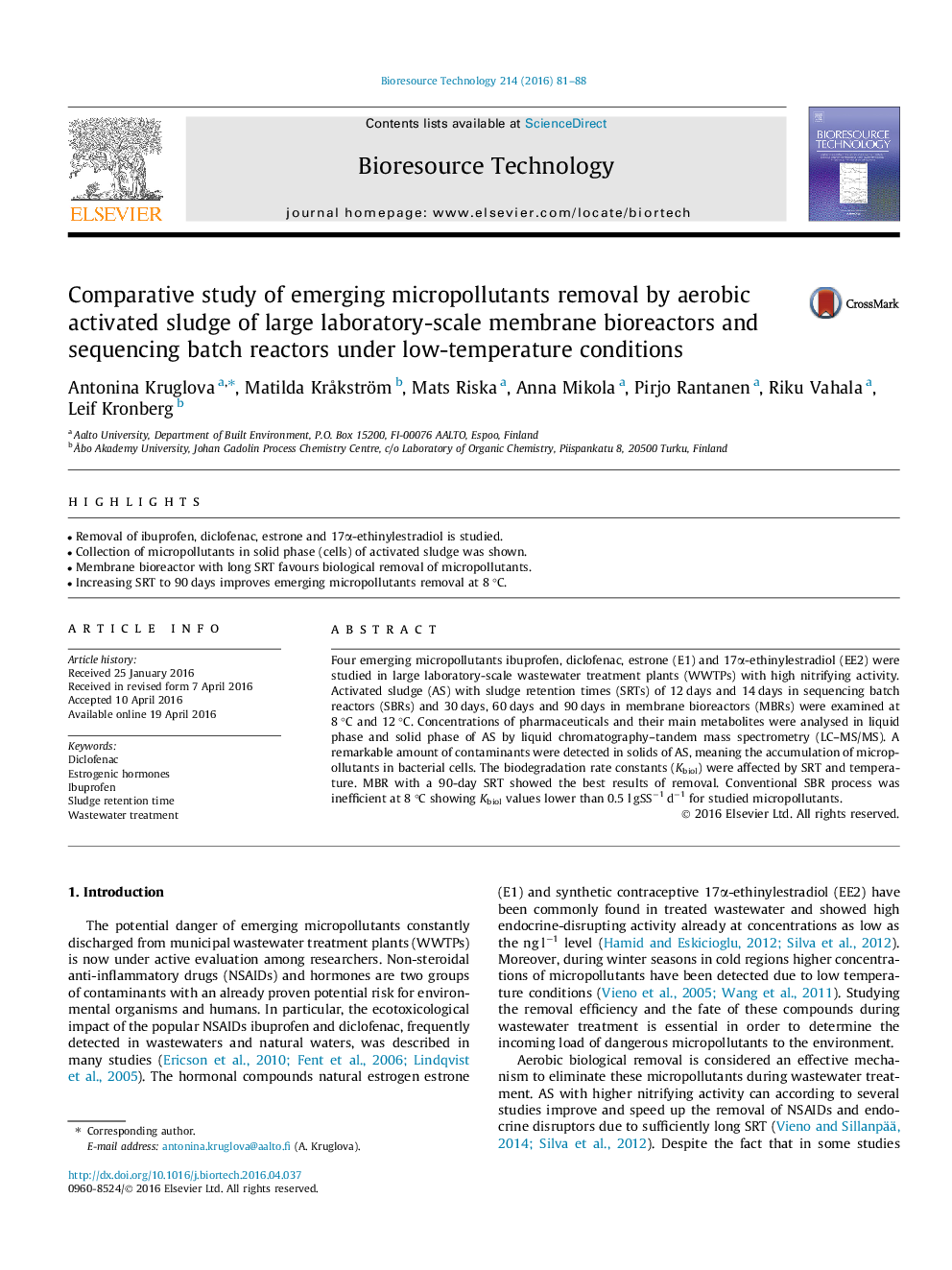| Article ID | Journal | Published Year | Pages | File Type |
|---|---|---|---|---|
| 679041 | Bioresource Technology | 2016 | 8 Pages |
•Removal of ibuprofen, diclofenac, estrone and 17α-ethinylestradiol is studied.•Collection of micropollutants in solid phase (cells) of activated sludge was shown.•Membrane bioreactor with long SRT favours biological removal of micropollutants.•Increasing SRT to 90 days improves emerging micropollutants removal at 8 °C.
Four emerging micropollutants ibuprofen, diclofenac, estrone (E1) and 17α-ethinylestradiol (EE2) were studied in large laboratory-scale wastewater treatment plants (WWTPs) with high nitrifying activity. Activated sludge (AS) with sludge retention times (SRTs) of 12 days and 14 days in sequencing batch reactors (SBRs) and 30 days, 60 days and 90 days in membrane bioreactors (MBRs) were examined at 8 °C and 12 °C. Concentrations of pharmaceuticals and their main metabolites were analysed in liquid phase and solid phase of AS by liquid chromatography–tandem mass spectrometry (LC–MS/MS). A remarkable amount of contaminants were detected in solids of AS, meaning the accumulation of micropollutants in bacterial cells. The biodegradation rate constants (Kbiol) were affected by SRT and temperature. MBR with a 90-day SRT showed the best results of removal. Conventional SBR process was inefficient at 8 °C showing Kbiol values lower than 0.5 l gSS−1 d−1 for studied micropollutants.
